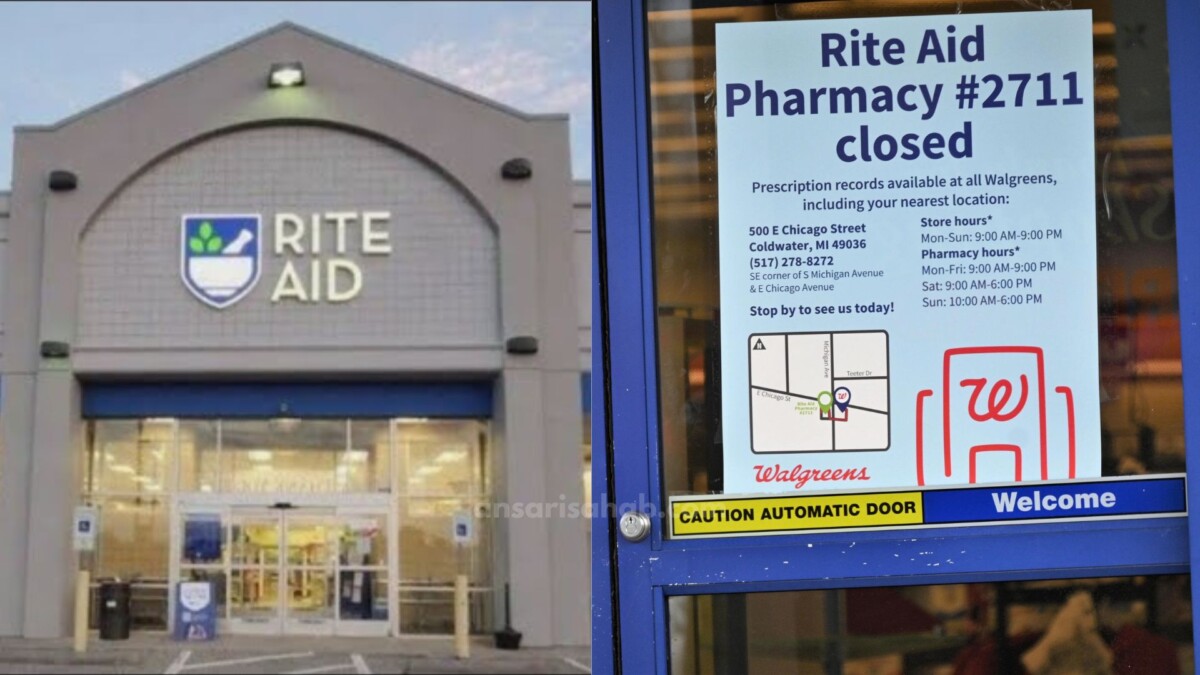As Rite Aid celebrates its 1-year birthday, the drug stores chain based in Camp Hill, Pennsylvania, finds itself at a crossroads. The company’s recent announcement of store closures and a bankruptcy filing reflects the challenges it faces in a rapidly evolving retail landscape. In this comprehensive analysis, we delve into the factors influencing Rite Aid’s decisions, the impact on employees and communities, and the uncertain but hopeful future the company is striving to achieve.
Rite Aid’s Struggles and Restructuring Efforts:
Rite Aid, the third-largest drugstore chain in the United States with over 2,100 stores, has been grappling with various challenges. Increased competition from both traditional drugstore chains and online retailers, including giants like Amazon and Walgreens.com, has put significant pressure on the company’s market share. Furthermore, Rite Aid’s struggle to adapt to changing consumer habits and its slow adoption of new technologies have hindered its ability to stay competitive.
To address these challenges, Rite Aid initiated a restructuring plan that includes closing stores, streamlining operations, and investing in its online pharmacy business. The company has already closed over 150 stores this year, and an additional 167 stores are set to close as part of its bankruptcy filing. These closures are expected to impact thousands of employees and communities across 19 states, including California, Pennsylvania, New York, and Ohio.
Store Closure Impact:
The closures are not just a strategic shift for Rite Aid but a significant event with wide-reaching consequences. Job losses, estimated to be in the thousands, will affect communities where Rite Aid stores served as anchors. Beyond the direct impact on employees, the closures will make it more challenging for residents to access essential pharmacy services. Rite Aid’s stores often act as crucial healthcare providers in these areas, and their absence may lead to increased travel distances for customers seeking prescriptions and other drugstore needs.
Suggested: Chase Bank Branches Closing: JPMorgan Will Shut Down 159 Branches in 2023
Financial Ramifications and Future Outlook:
While the closures will result in a substantial charge of up to $220 million in the fourth quarter of its fiscal year, Rite Aid anticipates long-term financial benefits. The company’s decision to focus on smaller, more efficient store formats reflects a commitment to adapt to changing market dynamics and improve overall profitability. Rite Aid is also exploring strategic partnerships and investments to enhance its business model and regain a competitive edge.
Rite Aid’s bankruptcy filing, a Chapter 11 protection move, underscores the severity of its financial challenges. However, the company’s strengths, including a large customer base and a well-established brand, offer potential avenues for recovery. The appointment of a new CEO, Peter Hearne, known for success in the retail industry, adds a positive element to Rite Aid’s efforts to emerge stronger from its current predicament.
Conclusion and Future Prospects:
As Rite Aid navigates these turbulent waters, the uncertainty surrounding its future is palpable. The retail industry’s landscape is evolving, and Rite Aid’s ability to adapt will play a crucial role in determining its fate. The strategic decisions to close stores, restructure operations, and invest in online capabilities indicate a commitment to revitalization. Whether Rite Aid can successfully navigate through bankruptcy, emerge as a more agile and profitable entity, and regain its position in the market remains to be seen.
In conclusion, Rite Aid’s journey involves difficult decisions and significant challenges, but it also presents an opportunity for reinvention. The coming months will be pivotal in shaping the future trajectory of this venerable drugstore chain.









